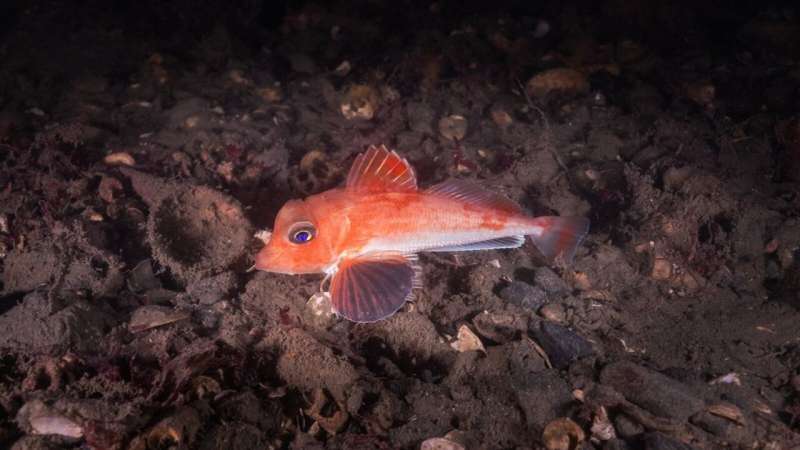This article has been reviewed according to Science X's editorial process and policies. Editors have highlighted the following attributes while ensuring the content's credibility:
fact-checked
trusted source
proofread
Rare native fish spotted in Wellington Harbor

A rare native fish has been photographed in Wellington Harbor and researchers believe it's one of the few times the species has been caught on camera in its natural habitat.
Dr. Valerio Micaroni, a marine biologist at Te Herenga Waka—Victoria University of Wellington, says the scaly gurnard is a reddish-colored fish that grows to about 20 centimeters. It's known to live in Wellington waters but sightings are rare.
The fish was spotted by Dr. Micaroni and colleague Francesca Strano while they were exploring the animal communities that live in the shallow waters (<30 meters) around Wellington. Its identity was confirmed by Dr. Malcolm Francis, a fish biologist and author of Coastal Fishes of New Zealand.
"There's very little information about the location and composition of the animal-dominated habitats in Wellington's waters, so the aim of our research is to describe these areas and identify places that need protection or restoration," Dr. Micaroni says.
Five sites in the harbor have been mapped so far.
"As well as the scaly gurnard, we've found lots of other cool animals. At Shark Bay and Shelly Bay on the Miramar Peninsula, there's a diverse underwater garden of sea sponges. Horse mussels and brachiopods—ancient animals that live on the sea floor—are also abundant."
Sponge gardens, which are typically found near the shore at depths of between seven and 15 meters, have also been identified at sites at Evans Bay, Kaiwharawhara and west Petone. However, these sites are heavily impacted by high levels of sedimentation.
Another sponge garden and a red algae bed were found at Mahanga Bay.
Ms. Strano says the areas were initially explored using a remotely operated underwater vehicle (ROV). Detailed information about the habitats and the animals they support was then collected by diving at the sites.
"So far, we've sent the ROV on 52 dives. That's given us a lot of valuable data about these ecosystems and the threats they face," she says.
"Lots of people have looked at the seaweed and kelp-dominated areas in the harbor, but there's little data on the animal-dominated ecosystems so this project aims to figure out where they are."
Provided by Victoria University of Wellington




















